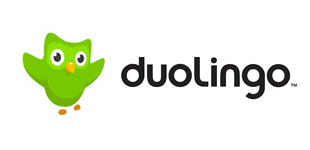Learn a New Language and Change the World

Leveraging interactive educational technology for a greater mission of equality for humanity!
The Source of Software Innovation:
Luis Von Ahn, a Carnegie Mellon computer science professor, discovered that with interactive technology an immense amount of value could be created and captured globally via an existing source that no additional strain to the user. This is how ReCaptcha was born! At the very base ReCaptcha helps protect websites from spam users. It’s the encrypted word or phrase we see at most ecommerce check outs.
There were over 200 million ReCaptcha’s typed each day. Each take the user about 10 seconds to type creating about 500 thousand hours of utility from users. With this information, Luis was able visualize and implement practical use of this new user utility. Now not only are companies using ReCaptcha for website security but users are decoding words that an OCR (Optimal Character Recognition) scanning software program was not able to recognize when scanning physical books for the purpose of translating the words into digital analogs.
The Opportunity:
Luis now wanted to structure a business around crowdsourcing individuals around the globe to translate the entire web. Welcome the birth of Duolingo! Duolingo is a creative interactive educational technology firm built with the recognition that in a globalized economy with over 6,500 languages, there is a clear opportunity to capture value by translating the web into multiple languages. The major concern of Duolingo was the lack of bilingual’s motivated to accomplish the business model and mission. Current software technology is not equipped to properly meet translation needs as languages have variations that only humans can pick up.
The Users:
Duolingo’s business model recognizes two unique users. First there are those with translation needs and there are those who are trying to learn a dominant global language. When thinking about the translation services, in the classic model using the most global cost effective solutions, it would take USD$ 50 million to simply complete the remaining 80% of English Wikipedia that has not yet been translated into Spanish. When considering the langue learners, there are 1.2 billion individuals studying a foreign language and 5 million of those users pay for learning services at an average of USD$ 500. Recognizing these two unique users, Duolingo created a science based language education platform that helps translate the web via crowdsourcing through language learners. They have secured over 100 million language learning users in only 2 year of which 20 million are active, which is more than the total count of students in the US education system.
The Platform:
Language learners, for free, can choose to learn over 20 languages and in 34 hours achieve the equivalent of a one semester language class. It has leveraged different technology platforms for simple usage such as the ability to learn through either the use of an internet browser, phone or table. The user interface was inspired by the physiological frameworks around mobile app games, popular for retaining a strong active user base. To begin building its value and brand as the #1 global network for language learning, Duolingo has secured strategic partnerships with companies like LinkedIn to share fluency percentages that are attained through its platform.
Show Me the Money:
How does Duolingo make money? As the learner is using the platform, he/she is essentially casting a vote of their preferred translation of a sentence. Since its user base is significant, it has the ability to run A/B type testing on its data to confirm an exceptional translation of a variety of sentences uniquely fitted into complete reputable piece of language art.
The Network:
Duolingo’s innovative and agile ecosystem, best positions them to offer translation services to companies while maintaining a fair business model for free language education. The fascinating vision of Duolingo is anything but short sided. As it strives to become the #1 global network for language learning via digital solutions, it continues to innovate uniquely leveraging its platform for a greater mission of equality for humanity.
Sources:
http://www.digitaljournal.com/pr/2761607
https://www.ted.com/talks/luis_von_ahn_massive_scale_online_collaboration?language=en#t-573568
http://www.entrepreneur.com/article/250900
https://en.wikipedia.org/wiki/List_of_languages_by_number_of_native_speakers








Cool – I’ve used Duolingo before (the language learning, not translation side) but didn’t realize the impetus for its inception! I’ll be interested to see how this service fares against paid language learning platforms like Rosetta Stone and whether its crowdsourcing business model will be able to continually improve content (ala Wikipedia). Are there any quality control mechanisms beyond self-policing?
Thanks Avilia for the post. I just happened to download duolingo earlier this week as it was widely recommended to me. As you detail, the company provides a significant amount of value to consumers and content providers. I’m still curious as to what the steady state business model will be. What is your view on how the Company will derive economics from the ecosystem that it has created over the long term? Will it be on the consumer side or the hosting side? Is it sustainable once the software becomes good enough that it doesn’t require human input?
Avilia, I’ve used Duolingo on my phone before and it is one of my favorite apps. I’m still unsure how they connect their language learning software to their goal of translating the web. Is it the case that more advanced Duolingo users are given actual websites (i.e. Wikipedia) to translate and then the learners are using their labor to translate sites. How does one ensure translation accuracy and quality?
While I see the value in an individual learning a language for real-world communication, do you feel the rise in high-quality translation software will be a more effective means to translate the web? Should be an interesting story to watch over the next few years!
I’m a huge fan of Duolingo but never knew they had a translation platform – is this something already in place or something they are pursuing? how will it work?